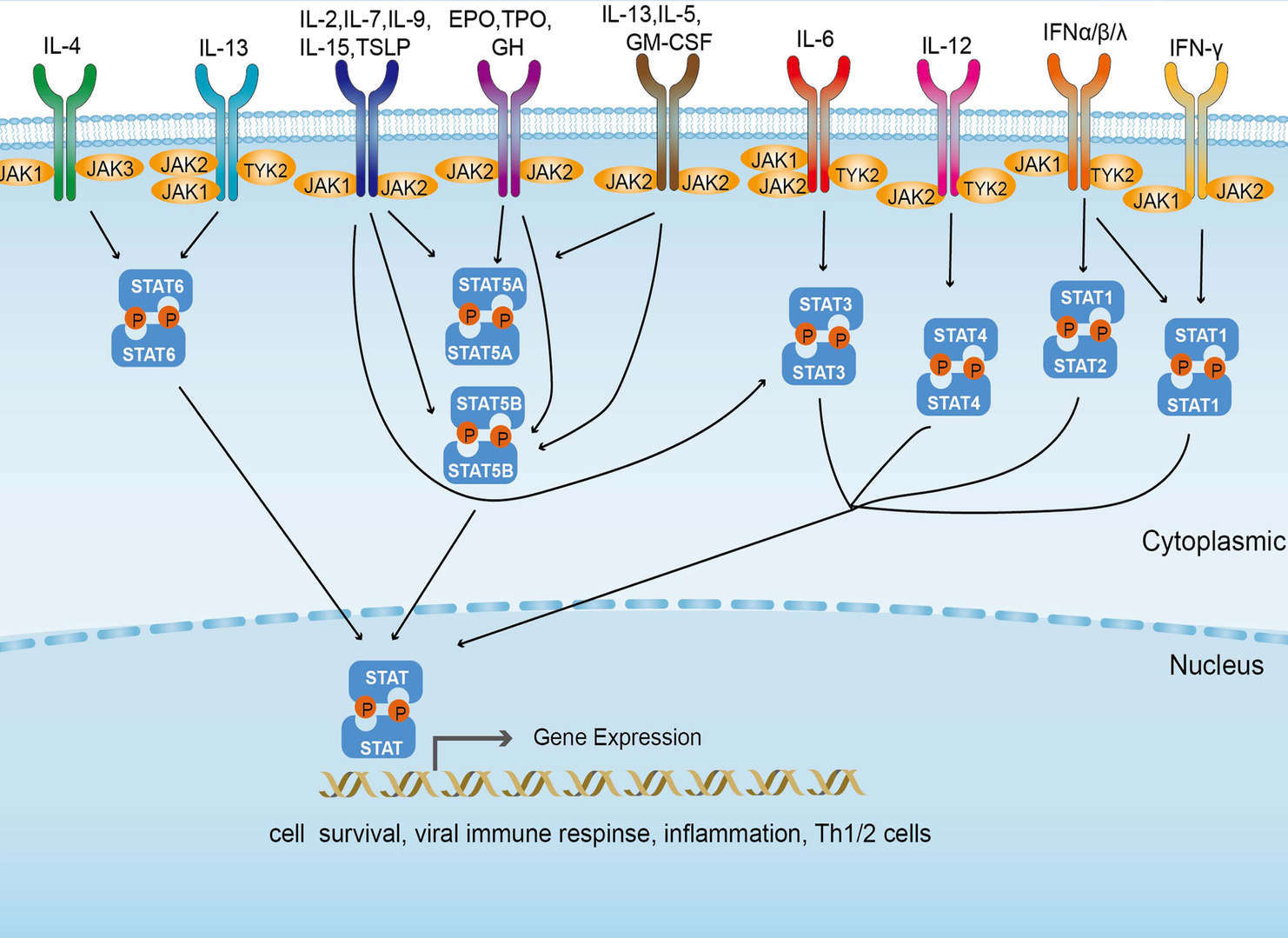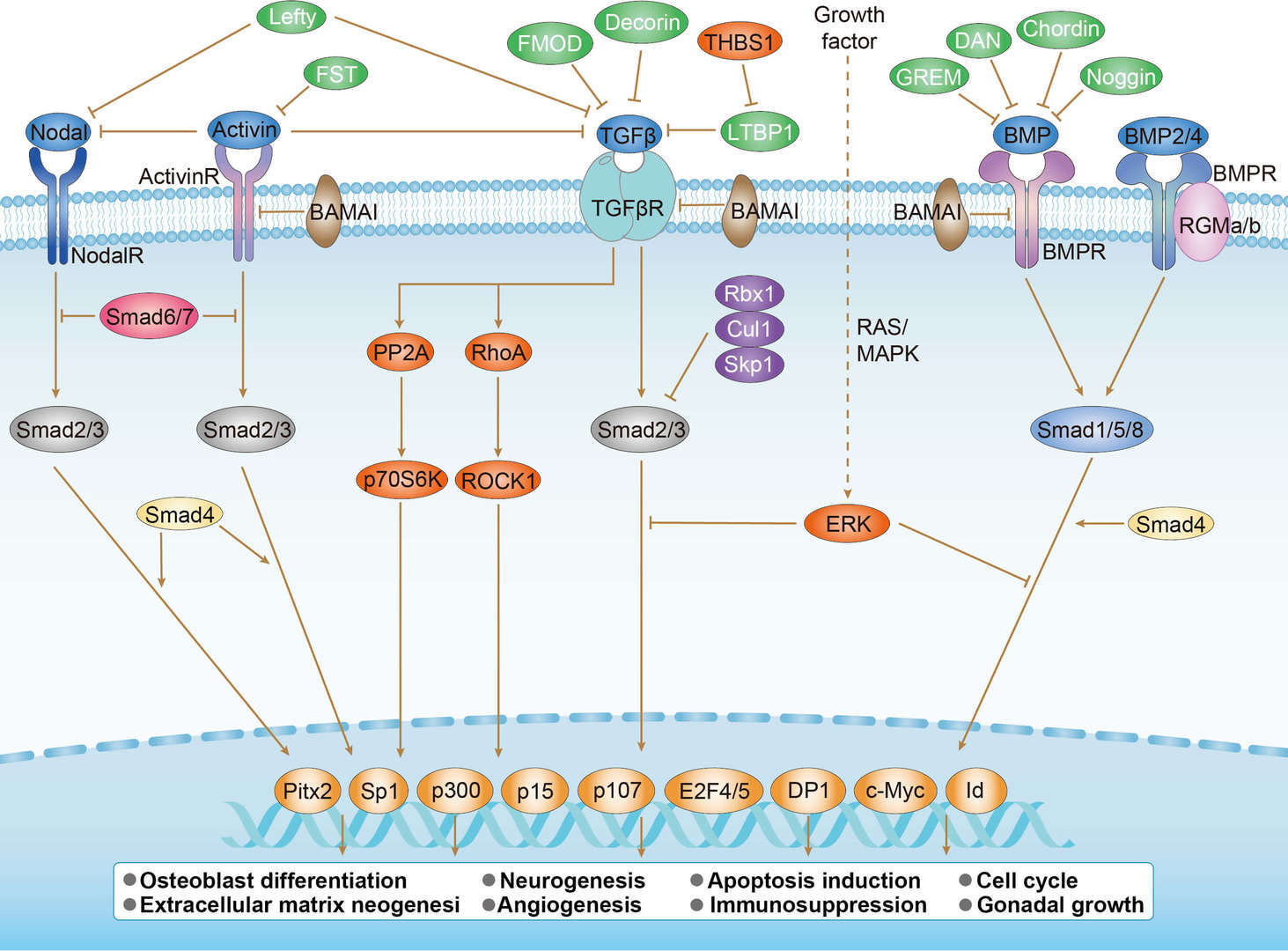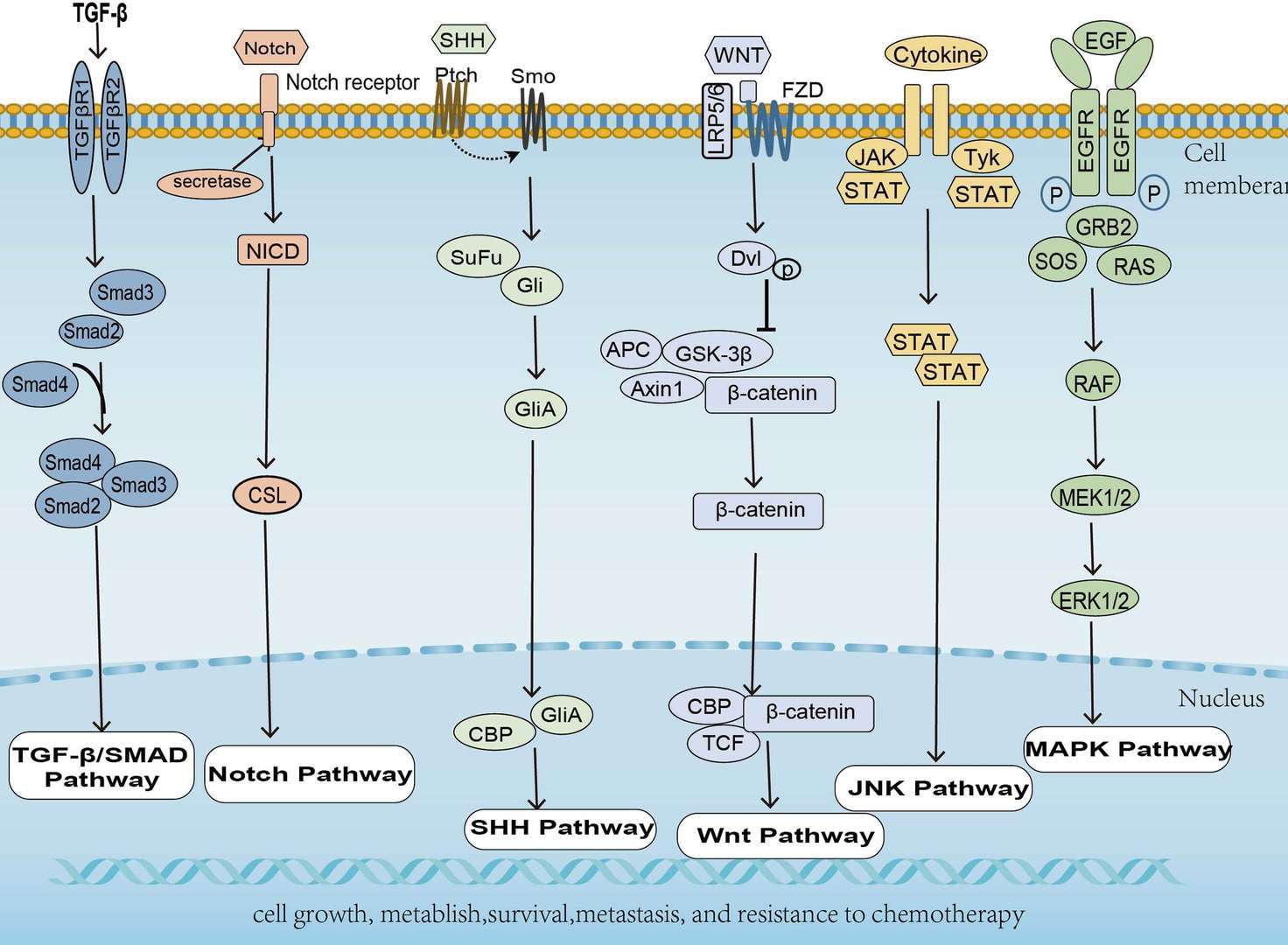Human Anti-TGFBR2 (clone LY3022859) scFv-Fc Chimera
CAT#: VS-0425-FY52
The anti-TGFBR2 scFv-Fc antibody is a monoclonal antibody targeting TGFβRII (Transforming Growth Factor Beta Receptor II). The clone LY3022859 exhibits a strong binding affinity to human TGFβRII, with an EC₅₀ value of 0.306 nM. TGFβRII plays a crucial role in various diseases, including cancer and fibrosis. This antibody specifically binds to TGFβRII through its single-chain variable fragment (scFv) domain, while the Fc fragment allows interaction with immune effector molecules such as Fc receptors and the complement system. This antibody has potential applications in researching the functions and mechanisms of TGFβRII and may serve as a promising therapeutic target for related diseases.


Specifications
- Host Species
- Human
- Type
- Human IgG1, scFv-Fc
- Specificity
- Human TGFBR2
- Species Reactivity
- Human
- Clone
- LY3022859
- Applications
- Blocking, ADCC (weak), ELISA
- Related Disease
- Cancer
Product Property
- Purity
- >95% as determined by SDS-PAGE
- Concentration
- Please refer to the vial label for the specific concentration.
- Storage
- Centrifuge briefly prior to opening vial. Store at +4°C short term (1-2 weeks). Aliquot and store at -20°C long term. Avoid repeated freeze/thaw cycles.
- Shipping
- Ice packs
Applications
- Application Notes
- The optimal dilution concentration is determined by the experiment.
Target
- Alternative Names
- Transforming Growth Factor Beta Receptor 2; Transforming Growth Factor, Beta Receptor II (70/80kDa); Transforming Growth Factor Beta Receptor II; TGF-Beta Type II Receptor; EC 2.7.11.30; TbetaR-II; TGFR-2; Transforming Growth Factor, Beta Receptor II Epsilon; Transforming Growth Factor, Beta Receptor II Alpha; Transforming Growth Factor, Beta Receptor II Delta; Transforming Growth Factor, Beta Receptor II Gamma; Transforming Growth Factor Beta Receptor Type IIC; Transforming Growth Factor, Beta Receptor II Beta; Transforming Growth Factor-Beta Receptor Type II; TGF-Beta Receptor Type IIB
- Gene ID
- 7048
- UniProt ID
- P37173
- Long Name
- Transforming Growth Factor Beta Receptor 2
- Sequence Similarities
- Belongs to the protein kinase superfamily. TKL Ser/Thr protein kinase family. TGFB receptor subfamily.
- Cellular Localization
- Cell membrane, Membrane, Secreted
- Post Translation Modifications
- Phosphorylated on a Ser/Thr residue in the cytoplasmic domain.
- Protein Refseq
- NP_001020018.1; NP_003233.4
- Function
- Transmembrane serine/threonine kinase forming with the TGF-beta type I serine/threonine kinase receptor, TGFBR1, the non-promiscuous receptor for the TGF-beta cytokines TGFB1, TGFB2 and TGFB3. Transduces the TGFB1, TGFB2 and TGFB3 signal from the cell surface to the cytoplasm and thus regulates a plethora of physiological and pathological processes including cell cycle arrest in epithelial and hematopoietic cells, control of mesenchymal cell proliferation and differentiation, wound healing, extracellular matrix production, immunosuppression and carcinogenesis. The formation of the receptor complex composed of 2 TGFBR1 and 2 TGFBR2 molecules symmetrically bound to the cytokine dimer results in the phosphorylation and activation of TGFBR1 by the constitutively active TGFBR2. Activated TGFBR1 phosphorylates SMAD2 which dissociates from the receptor and interacts with SMAD4. The SMAD2-SMAD4 complex is subsequently translocated to the nucleus where it modulates the transcription of the TGF-beta-regulated genes. This constitutes the canonical SMAD-dependent TGF-beta signaling cascade. Also involved in non-canonical, SMAD-independent TGF-beta signaling pathways.
Isoform 1: Has transforming growth factor beta-activated receptor activity.
Isoform 2: Has transforming growth factor beta-activated receptor activity.
Isoform 3: Binds TGFB1, TGFB2 and TGFB3 in the picomolar affinity range without the participation of additional receptors. Blocks activation of SMAD2 and SMAD3 by TGFB1.
Customer Review
There are currently no Customer reviews or questions for VS-0425-FY52. Click the button above to contact us or submit your feedback about this product.
Submit Your Publication
Published with our product? Submit your paper and receive a 10% discount on your next order! Share your research to earn exclusive rewards.
Related Signaling Pathways
Related Diseases
Downloadable Resources
Download resources about recombinant antibody development and antibody engineering to boost your research.
Product Notes
This is a product of Creative Biolabs' Hi-Affi™ recombinant antibody portfolio, which has several benefits including:
• Increased sensitivity
• Confirmed specificity
• High repeatability
• Excellent batch-to-batch consistency
• Sustainable supply
• Animal-free production
See more details about Hi-Affi™ recombinant antibody benefits.
Datasheet
MSDS
COA
Certificate of Analysis LookupTo download a Certificate of Analysis, please enter a lot number in the search box below. Note: Certificate of Analysis not available for kit components.
See other products for "Clone LY3022859"
- CAT
- Product Name
See other products for "TGFBR2"
Select a product category from the dropdown menu below to view related products.
| CAT | Product Name | Application | Type |
|---|---|---|---|
| MOB-2430z | Mouse Anti-TGFBR2 Recombinant Antibody (clone 19A2) | WB, ELISA, FC | Mouse IgG1 |
| MOB-2022CT | Recombinant Mouse anti-Human TGFBR2 Monoclonal antibody (NN0067-5G25) | FC, IHC-Fr, IHC-P, WB | |
| HPAB-0232-YC | Human Anti-TGFBR2 Recombinant Antibody (clone TGF1) | ELISA, FuncS | Humanized IgG |
| HPAB-0150-FY | Human Anti-TGFBR2 Recombinant Antibody (clone LY3022859) | ELISA | Human IgG |
| HPAB-0726-CN | Human Anti-TGFBR2 Recombinant Antibody (clone TGF3) | WB, ELISA | Human IgG1 |
| CAT | Product Name | Application | Type |
|---|---|---|---|
| TAB-644CT-S(P) | Anti-Human TGFβRII Recombinant Antibody scFv Fragment (TR4B16) | ELISA, WB, FC, Inhibit | Human antibody |
| TAB-645CT-S(P) | Anti-Human TGFβRII Recombinant Antibody scFv Fragment (TR4C175) | ELISA, WB, FC, Inhibit | Human antibody |
| TAB-646CT-S(P) | Anti-Human TGFβRII Recombinant Antibody scFv Fragment (TR4D204) | ELISA, WB, FC, Inhibit | Human antibody |
| TAB-647CT-S(P) | Anti-Human TGFβRII Recombinant Antibody scFv Fragment (TR4D455) | ELISA, WB, FC, Inhibit | Human antibody |
| TAB-648CT-S(P) | Anti-Human TGFβRII Recombinant Antibody scFv Fragment (TR4D465) | ELISA, WB, FC, Inhibit | Human antibody |
| CAT | Product Name | Application | Type |
|---|---|---|---|
| MOR-3552 | Rabbit Anti-TGFBR2 Recombinant Antibody (clone DS3552AB) | WB | Rabbit IgG |
| MOR-4762 | Rabbit Anti-TGFBR2 Recombinant Antibody (clone TH276DS) | WB, IF, ICC, FC | Rabbit IgG |
| CAT | Product Name | Application | Type |
|---|---|---|---|
| HPAB-0232-YC-S(P) | Human Anti-TGFBR2 Recombinant Antibody (clone TGF1); scFv Fragment | ELISA, FuncS | Humanized scFv |
| HPAB-0150-FY-S(P) | Human Anti-TGFBR2 Recombinant Antibody (clone LY3022859); scFv Fragment | ELISA | Human scFv |
| HPAB-0726-CN-S(P) | Human Anti-TGFBR2 Recombinant Antibody (clone TGF3); scFv Fragment | WB, ELISA | Human scFv |
| HPAB-N0262-YC-S(P) | Human Anti-TGFBR2 Recombinant Antibody (clone Antibody A); scFv Fragment | Block | Human scFv |
| HPAB-J0240-YC-S(P) | Human Anti-TGFBR2 Recombinant Antibody (clone TGF2); scFv Fragment | ELISA, Block | Human scFv |
| CAT | Product Name | Application | Type |
|---|---|---|---|
| HPAB-0232-YC-F(E) | Human Anti-TGFBR2 Recombinant Antibody (clone TGF1); Fab Fragment | ELISA, FuncS | Humanized Fab |
| HPAB-0150-FY-F(E) | Human Anti-TGFBR2 Recombinant Antibody (clone LY3022859); Fab Fragment | ELISA | Human Fab |
| HPAB-0726-CN-F(E) | Human Anti-TGFBR2 Recombinant Antibody (clone TGF3); Fab Fragment | WB, ELISA | Human Fab |
| HPAB-N0262-YC-F(E) | Human Anti-TGFBR2 Recombinant Antibody (clone Antibody A); Fab Fragment | Block | Human Fab |
| HPAB-J0240-YC-F(E) | Human Anti-TGFBR2 Recombinant Antibody (clone TGF2); Fab Fragment | ELISA, Block | Human Fab |
| CAT | Product Name | Application | Type |
|---|---|---|---|
| VS-0425-YC106 | Recombinant Anti-TGFBR2 Vesicular Antibody, EV Displayed (VS-0425-YC106) | ELISA, FC, Inhib, Cell-uptake |
Popular Products

Application: WB, IF, IP, Neut, FuncS, ELISA, FC

Application: Neut, ELISA, IF, IP, FuncS, FC, ICC

Application: WB, FC, IP, ELISA, Neut, FuncS, IF

Application: FuncS, IF, Neut, ELISA, FC, IP, ICC

Application: ELISA
-YJ-3.jpg)
Application: ELISA

Application: ELISA

Application: ELISA, IHC, FC, IP, IF, Inhib

Application: ELISA, FC, Neut, Inhib

Application: ELISA, FC, Neut, Inhib
For research use only. Not intended for any clinical use. No products from Creative Biolabs may be resold, modified for resale or used to manufacture commercial products without prior written approval from Creative Biolabs.
This site is protected by reCAPTCHA and the Google Privacy Policy and Terms of Service apply.





 JAK-STAT Signaling Pathway
JAK-STAT Signaling Pathway
 TGF-β Signaling Pathway
TGF-β Signaling Pathway
 Pancreatic Cancer
Pancreatic Cancer














